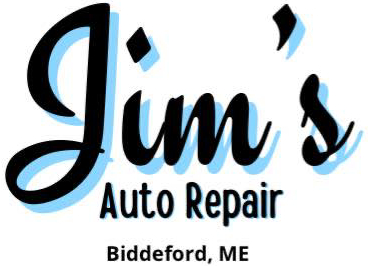Brake Services You Can Trust – Safety Starts Here
Our shop provides full brake system services to keep you safe on the road. We inspect and replace brake pads, rotors, and drums, and perform brake fluid exchanges to ensure proper hydraulic function. If your ABS light is on, we offer diagnostic services to identify and resolve the issue.
Signs You May Need a Brake Inspection
Squeaking, grinding, or squealing when braking
Soft or spongy brake pedal
Vibration when applying the brakes
Vehicle pulling to one side when stopping
ABS warning light on the dashboard

Don’t wait until it’s too late, or schedule with us today for expert brake care.
Frequently Asked Questions About Brake Safety & Repairs
How do I know if my brakes need repair or replacement?
Warning signs include:
- Squealing, grinding, or scraping noises
- Soft or spongy brake pedal
- Increased stopping distance
- Vibration when braking
- Brake warning light on dashboard
- Car pulling to one side when braking
What are the main components of a brake system?
Key parts include:
- Brake pads and shoes
- Brake rotors and drums
- Brake calipers
- Brake lines and master cylinder
How often should I replace brake pads?
Typically, every 30,000 to 70,000 miles, but it depends on driving habits, vehicle type, and pad material.
Do rotors need to be replaced with brake pads?
Not always. If rotors are warped, cracked, or below thickness specs, they should be replaced. In some cases, they can be resurfaced.
How long does a brake repair take?
Replacing pads and rotors usually takes 1–2 hours. More complex repairs (like calipers or lines) may take longer.
How much does brake repair or replacement cost?
Varies by vehicle and parts:
- Brake pads: $100–$300 per axle
- Pads + rotors: $250–$600 per axle
- Full system repairs: $500–$1,000+
What causes brakes to squeak or grind?
- Squeaking: Worn pads, dirty rotors, or lack of lubrication.
- Grinding: Pads are completely worn out and metal is contacting the rotor
Is it dangerous to drive with worn brakes?
Yes. Worn brakes reduce stopping power, increase risk of accidents, and can damage other components like rotors and calipers.
What is brake fluid, and how often should it be changed?
Brake fluid transfers force from the pedal to the brake components. It should typically be replaced every 2–3 years or as recommended by your vehicle’s manufacturer.
What’s the difference between disc and drum brakes?
- Disc brakes (most common): Use pads and a rotor
- Drum brakes (often on rear wheels): Use shoes and a drum
- Disc brakes provide better stopping power and are easier to service.
How can I make my brakes last longer?
- Avoid hard braking
- Downshift when appropriate
- Keep a safe following distance
- Service brakes regularly
- Use high-quality parts
How do I know if my brakes need repair or replacement?
Warning signs include:
- Squealing, grinding, or scraping noises
- Soft or spongy brake pedal
- Increased stopping distance
- Vibration when braking
- Brake warning light on dashboard
- Car pulling to one side when braking
What are the main components of a brake system?
Key parts include:
- Brake pads and shoes
- Brake rotors and drums
- Brake calipers
- Brake lines and master cylinder
How often should I replace brake pads?
Typically, every 30,000 to 70,000 miles, but it depends on driving habits, vehicle type, and pad material.
Do rotors need to be replaced with brake pads?
Not always. If rotors are warped, cracked, or below thickness specs, they should be replaced. In some cases, they can be resurfaced.
How long does a brake repair take?
Replacing pads and rotors usually takes 1–2 hours. More complex repairs (like calipers or lines) may take longer.
How much does brake repair or replacement cost?
Varies by vehicle and parts:
- Brake pads: $100–$300 per axle
- Pads + rotors: $250–$600 per axle
- Full system repairs: $500–$1,000+
What causes brakes to squeak or grind?
- Squeaking: Worn pads, dirty rotors, or lack of lubrication.
- Grinding: Pads are completely worn out and metal is contacting the rotor
Is it dangerous to drive with worn brakes?
Yes. Worn brakes reduce stopping power, increase risk of accidents, and can damage other components like rotors and calipers.
What is brake fluid, and how often should it be changed?
Brake fluid transfers force from the pedal to the brake components. It should typically be replaced every 2–3 years or as recommended by your vehicle’s manufacturer.
What’s the difference between disc and drum brakes?
- Disc brakes (most common): Use pads and a rotor
- Drum brakes (often on rear wheels): Use shoes and a drum
- Disc brakes provide better stopping power and are easier to service.
How can I make my brakes last longer?
- Avoid hard braking
- Downshift when appropriate
- Keep a safe following distance
- Service brakes regularly
- Use high-quality parts
Hear a squeal or feel a shake?
Don’t wait on brake problems—swing by Jim’s Auto for trusted, no-nonsense brake service.
Call us or stop in today to schedule your appointment!
